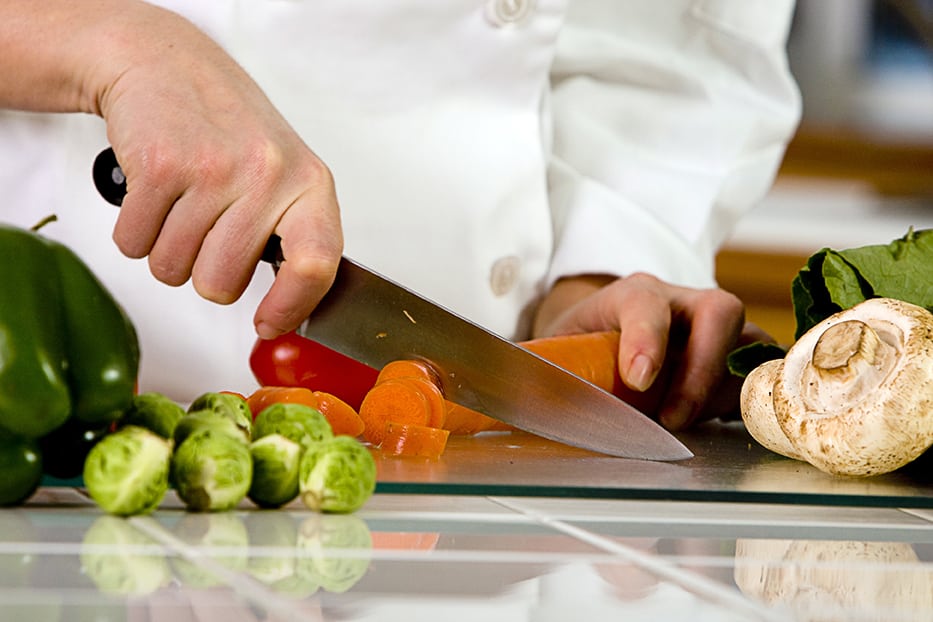7 Principles of HACCP for Restaurants

How to Pass a Restaurant Health Inspection
January 8, 20187 Principles of HACCP for Restaurants
There are 7 principles of HACCP that restaurant operators should know. Let’s start at the beginning—HACCP: What is it? HACCP stands for Hazard Analysis and Critical Control Point system. The FDA defines it as “a management system in which food safety is addressed through the analysis and control of biological, chemical, and physical hazards from raw material production, procurement and handling, to manufacturing, distribution and consumption of the finished product.” From growing food on farms to manufacturing it to eating food in a restaurant, HACCP is meant to provide guidance all along the food chain.
Some restaurant operators mistakenly think HACCP only applies to large operations for processing and manufacturing food. However, since the goal of HACCP is to identify, evaluate and control food safety hazards, this system is an excellent way for you to ensure you’re producing safe food for your customers. The following 7 principles of HACCP make up the framework for the system:
- Conduct a hazard analysis
- Determine the critical control points
- Establish critical limits
- Establish monitoring procedures
- Establish corrective actions
- Establish verification procedures
- Establish record-keeping and documentation procedures
1. Conduct a Hazard Analysis
You should create a list of hazards that includes information for all the dishes you serve in your restaurant. Hazards to food safety include biological, physical or chemical agents that, if not controlled, are most likely to lead to illness or injury. You should include all ingredients as well as information on how the food is stored, how it was distributed and how it was prepared. In order for the hazard analysis to be thorough, it’s critical to understand the hazards that can contaminate food at every stage of the process.
2. Determine the Critical Control Points
Once a hazard has been identified, critical limits need to be set to prevent, eliminate or reduce the hazard from leading to contamination. Some examples are cooking chicken to 165 degrees F to kill pathogens, storing meats at 41 degree F or below, and mixing sanitizer chemicals at the proper concentrations. These control measures should be trained and documented to show they are being followed every shift.
3. Establish Critical Limits
Monitoring procedures should be set in place to verify the critical limits at the control points are being followed. Examples of monitoring are temperature checks of cold-holding units, using sanitizer test strips and checking cooking temperatures of raw meats.
4. Establish Monitoring Procedures
Things can go wrong at any time. When this happens, a preset plan needs to be put into action. If at any time a critical limit is not met, steps should be taken to make sure the food doesn’t get served. For example, if raw chicken isn’t cooked to 165 degrees F, then it needs to be reheated back up to 165 degrees F before it is served. If cooling food doesn’t meet the required cool-down time, it should be discarded or treated to ensure it doesn’t cause illness. Monitoring procedures will identify times when critical limits aren’t met and the corrective action will correct the problem.
5. Establish Corrective Actions
You can be pretty sure that no matter how well you try to track and prevent hazards from developing in your restaurant, there are always going to be situations where human error comes into play, and procedures are not followed the way they should be. A simple example could be if raw beef is out of date according to the label in the walk-in, you should avoid serving it to your customers. You should note who is identifying the corrective action needed and who is carrying out the correction.
6. Establish Verification Procedures
You should verify that the HACCP plan is valid and operating according to plan. Create a verification schedule you can reference. It should list all activities related to following HACCP, the frequency of the activities and who has ownership of carrying out the activities.
7. Establish Record-Keeping and Documentation Procedures
Now that all of these important control measures are in place, it’s important to be able to prove it. If there is a foodborne illness complaint, the documentation needs to be available to prove that the critical limits are being followed to show that every step is being taken to ensure the food produced won’t make someone sick. Temperature and cooling logs need to be kept and retained for easy checking when needed. Regular audits from third-party inspection companies can be used to verify HACCP plans are being followed. Having all of the processes in place won’t mean anything if it can’t be proven that they are taking place every shift.
HACCP is a complex system, and even though restaurants are not required to implement HACCP (yet), the benefits are clear: if you follow the 7 principles of HACCP, you’ll be on the path to better food safety practices that protect your customers as well as your restaurant business.




